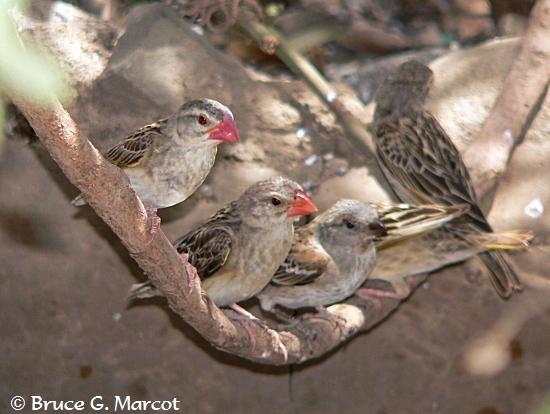|
Explanation: This week we are in northern Tanzania, in Sinya Wildlife Management Area, along the border with Kenya ... and viewing a maelstrom of birds at a waterhole. These are Red-billed Queleas, the most numerous bird on Earth, perhaps numbering on the order of 1.5 billion strong world-wide. View this week's video to see just a tiny flock of this species, swirling like a living tornado. Red-billed Queleas belong to the family of weavers and Old World sparrows, and are found widely in east Africa. They can form flocks so immense that they can strip entire croplands of cereal grain, and thus are a major agricultural pest species. Flocks can be so immense that they seem like living smoke clouds, and act like avian locust hoards in near-Biblical proportions. Why do they form such huge
flocks? Some theories suggest that flocking can confuse and overwhelm
predators and thwart attacks; that massive flocks can easily absorb predation
and remain resilient; that large flocks can serve as early warning signals of
an approaching predator; and that living in large flocks greatly reduces the
odds of being singled out by a predator.
|


